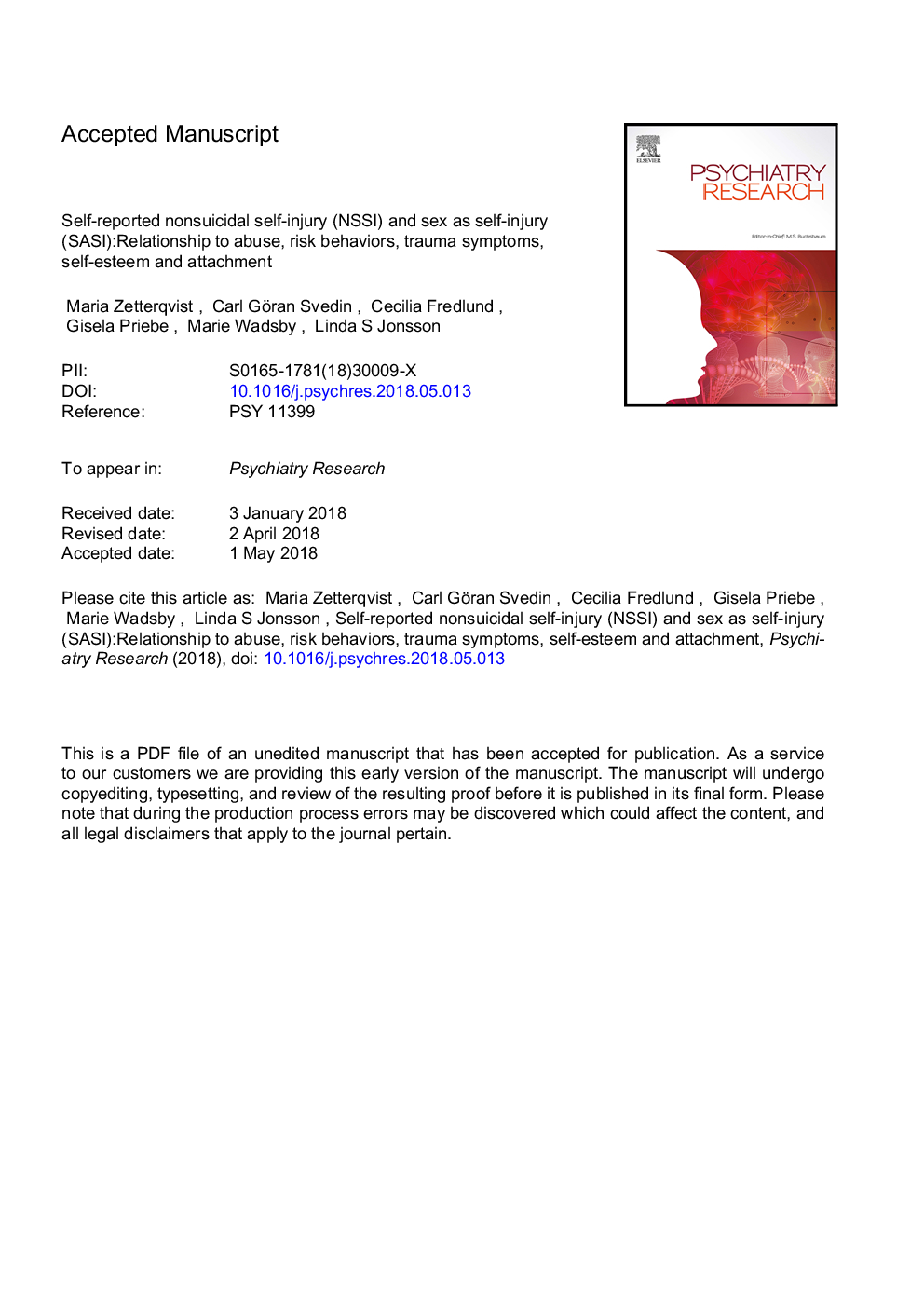| کد مقاله | کد نشریه | سال انتشار | مقاله انگلیسی | نسخه تمام متن |
|---|---|---|---|---|
| 6811520 | 1433781 | 2018 | 26 صفحه PDF | دانلود رایگان |
عنوان انگلیسی مقاله ISI
Self-reported nonsuicidal self-injury (NSSI) and sex as self-injury (SASI): Relationship to abuse, risk behaviors, trauma symptoms, self-esteem and attachment
دانلود مقاله + سفارش ترجمه
دانلود مقاله ISI انگلیسی
رایگان برای ایرانیان
کلمات کلیدی
موضوعات مرتبط
علوم زیستی و بیوفناوری
علم عصب شناسی
روانپزشکی بیولوژیکی
پیش نمایش صفحه اول مقاله

چکیده انگلیسی
This study focuses on a conceptually unexplored behavior among adolescents who report deliberately using sex as a means of self-injury. In a large high school-based sample (nâ¯=â¯5743), adolescents who engaged in sex as self-injury (SASI, nâ¯=â¯43) were compared to adolescents who reported direct nonsuicidal self-injury (NSSI, nâ¯=â¯933) and those who reported both NSSI and SASI (nâ¯=â¯82). Results showed that significantly more adolescents with SASI had experience of penetrating sexual abuse, as well as more sexual partners compared to those with NSSI. The SASI group also had higher levels of self-reported trauma symptoms, such as dissociation, posttraumatic stress and sexual concerns compared to those with NSSI, suggesting a distinct relationship between sexual abuse, trauma symptoms and engaging in sex as self-injury. There was no difference between the SASI and NSSI groups regarding experiences of emotional and physical abuse, self-esteem, parental care or overprotection or symptoms of depression, anxiety and anger. Adolescents who engaged in both NSSIâ¯+â¯SASI stood out as a more severe and burdened group, with more experience of abuse, risk behaviors and impaired psychosocial health. Adolescents with traumatic experiences such as sexual abuse need to be assessed for SASI and vice versa.
ناشر
Database: Elsevier - ScienceDirect (ساینس دایرکت)
Journal: Psychiatry Research - Volume 265, July 2018, Pages 309-316
Journal: Psychiatry Research - Volume 265, July 2018, Pages 309-316
نویسندگان
Maria Zetterqvist, Carl Göran Svedin, Cecilia Fredlund, Gisela Priebe, Marie Wadsby, Linda S Jonsson,